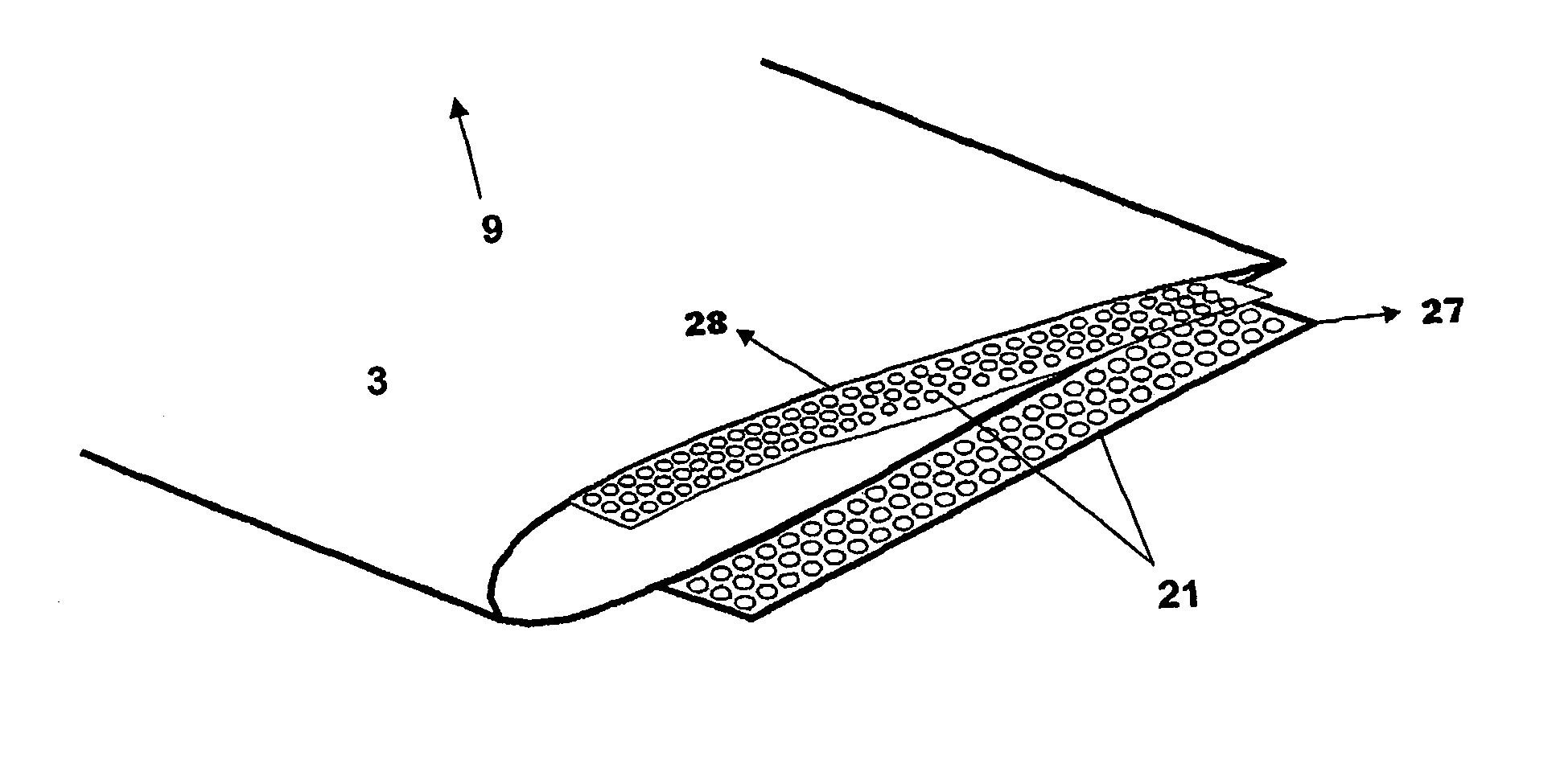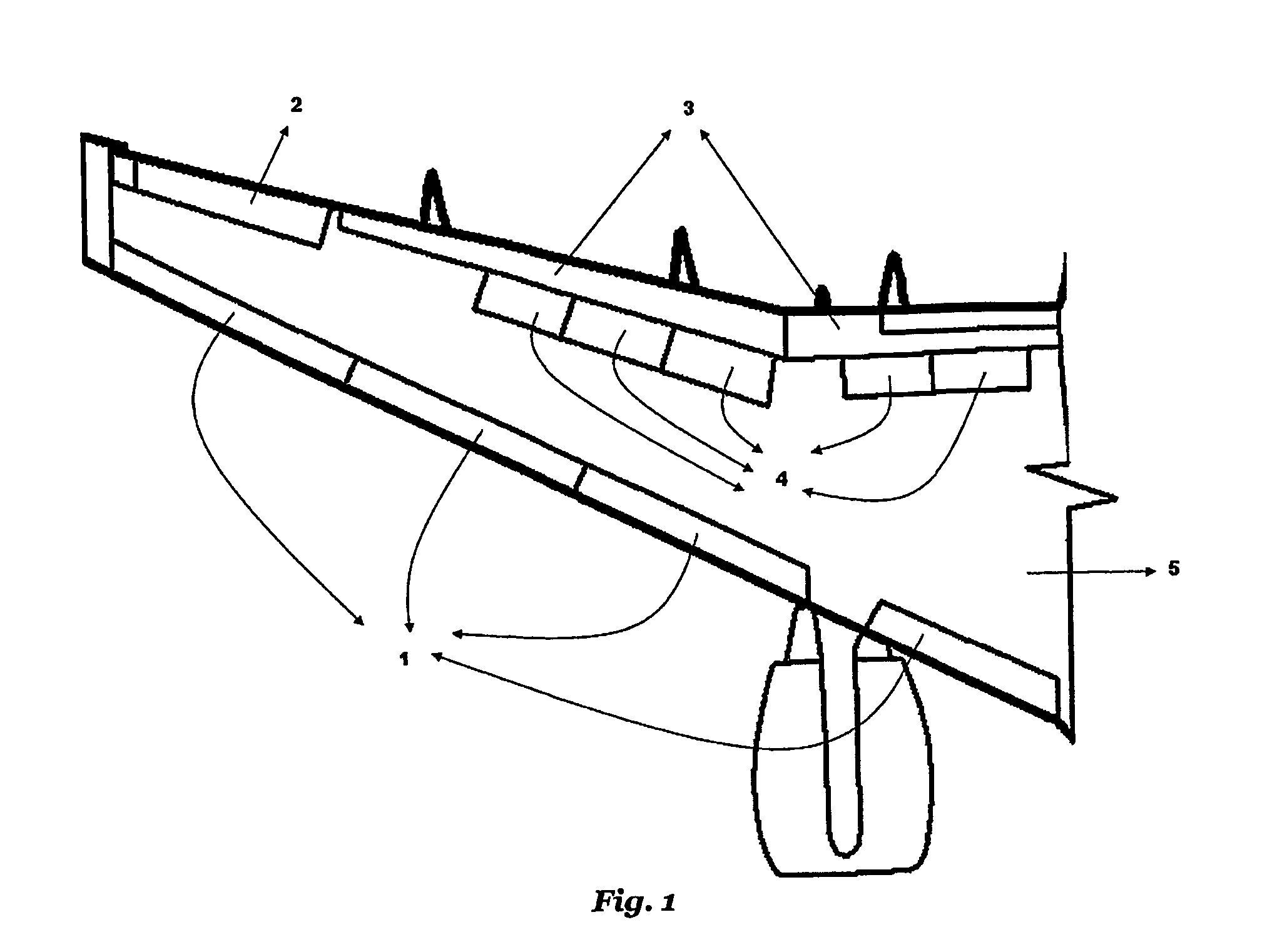Aircraft provided with aerodynamic seal for reduction of noise generated by aircraft control surfaces
a technology of aircraft control surface and aerodynamic seal, which is applied in the direction of aircraft control, influencers by generating vortices, aircraft components, etc., to achieve the effects of low installation effort, low cost and light weigh
- Summary
- Abstract
- Description
- Claims
- Application Information
AI Technical Summary
Benefits of technology
Problems solved by technology
Method used
Image
Examples
Embodiment Construction
[0044]FIG. 1 shows an aircraft which includes a main element 5 (wing) and a high lift system composed by elements 1 and 3. In the example represented herein, the high lift system comprises a plurality of movable components, such as a trailing edge assembly formed of a plurality of adjacent flaps 3 and a leading edge assembly 1 formed of a plurality of slats. Spoilers 4 and an aileron 2 are also seen in this figure.
[0045]The reduction of the aerodynamic generated noise becomes significant only during the approach and landing phase of flight of an aircraft. During take-off procedures, the engines are set at full power and the noise generated by the high lift devices is completely masked. Moreover, for the majority of take-off procedures both slats and flaps are partially extended and are retracted shortly after lift-off in order to improve the lift-over-drag ratio of the climbout configuration. On the other hand, during landing, both slats 1 and flaps 3 are fully extended. In addition...
PUM
 Login to View More
Login to View More Abstract
Description
Claims
Application Information
 Login to View More
Login to View More - R&D
- Intellectual Property
- Life Sciences
- Materials
- Tech Scout
- Unparalleled Data Quality
- Higher Quality Content
- 60% Fewer Hallucinations
Browse by: Latest US Patents, China's latest patents, Technical Efficacy Thesaurus, Application Domain, Technology Topic, Popular Technical Reports.
© 2025 PatSnap. All rights reserved.Legal|Privacy policy|Modern Slavery Act Transparency Statement|Sitemap|About US| Contact US: help@patsnap.com



